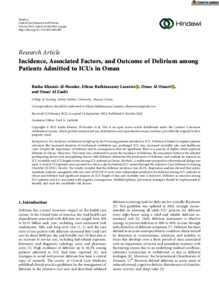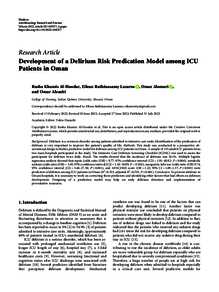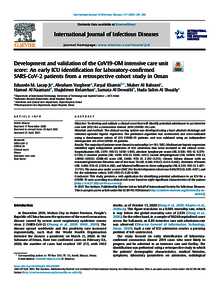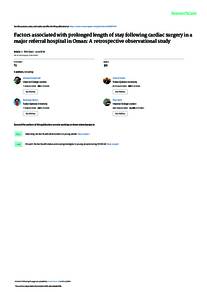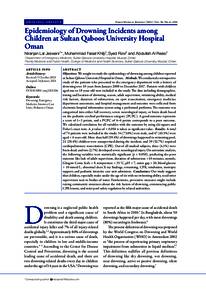Document
Incidence, associated factors, and outcome of delirium among patients admitted to ICUs in Oman.
Identifier
DOI: 10.1155/2022/4692483
Source
Critical Care Research and Practice. v. 2022, 4692483
Contributors
Country
United Kingdom.
Publisher
Hindawi Limited.
Gregorian
2022-01-01
Language
English
English abstract
Background. The incidence of delirium is high up to 46.3% among patients admitted to ICU. Delirium is linked to negative patient outcomes like increased duration of mechanical ventilation use, prolonged ICU stay, increased mortality rate, and healthcare costs. Despite the importance of delirium and its consequences that are significant, there is a scarcity of studies which explored delirium in Oman. Objectives. This study was conducted to assess the incidence of delirium, the association between the selected predisposing factors and precipitating factors with delirium, determine the predicators of delirium, and evaluate its impacts on ICU mortality and ICU length of stay among ICU patients in Oman. Methods. A multicenter prospective observational design was used. A total of 153 patients were assessed two-times a day by bedside ICU nurses through the Intensive Care Delirium Screening Checklist (ICDSC). Results. The results revealed that the delirium incidence was 26.1%. Regression analysis showed that sepsis, metabolic acidosis, nasogastric tube use, and APACHE II score were independent predictors for delirium among ICU patients in Oman and delirium had significant impacts on ICU length of stay and mortality rate. Conclusion. Delirium is common among ICU patients and it is associated with negative consequences. Multidisciplinary prevention strategies should be implemented to identify and treat the modifiable risk factors.
ISSN
2090-1305
Resource URL
Category
Journal articles

